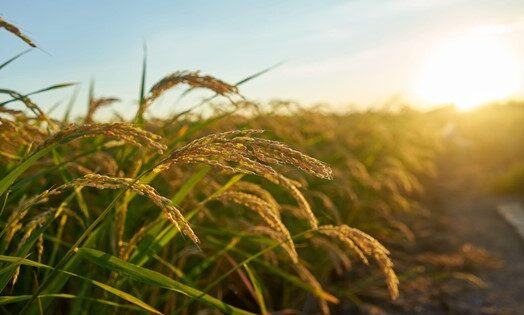Agriculture is the most excellent form of progression as it transforms earth, and even manure, into life, conferring upon its cultivator the additional reward of health and nutrition. India is agricultural land and we Indians are blessed to be born on this bountiful site. To honor the commitment of our Indian farmers or as we respectfully refer to them – Kisans and the history of their foundation, every year on 23rd December, India celebrates “Kisan Divas” i.e. National Farmers Day after our former honorable Prime Minister, Shri Choudhary Charan Singh who was a great farmer’s leader and started his journey as a farmer before acquiring a seat at the Parliament. His relentless efforts towards agriculture and its policies to improve the lives of Indian farmers have left a mark in the chronicles of Indian Agriculture.
Indian Agricultural Industry had a Gross Value of estimated Rs. 19.48 lakh crore (US$ 276.37 billion) in FY20 and is majorly divided among Food Crops/Cereals, Fruits, and Vegetables that are even exported to other regions across the globe. Its notable contribution to world trade with immense potential of value addition to the Indian Economy has made the Indian food and grocery market as sixth-largest in the world, with retail contributing 70% of the sales and food processing industry being ranked fifth in terms of production, consumption, export and expected growth.
Types of Farming practiced in India
Natural Farming:
Natural Farming is a conventional way of farming based on a diversified farming system that blends crops, trees, and livestock with functional biodiversity, a cost-effective method generating revenue and livelihood to millions of Indian farmers. The motive is to reduce the dependency on purchased inputs and employ traditional indigenous practices like biomass mulching, on-farm biomass recycling, cow dung-urine formulations, and periodic soil purification and principally includes produce like rice, barley, daikon, or citrus in biodiverse agricultural ecosystems.
‘Zero-budget Natural Farming’ is now being introduced using the principle of ‘Jeevamrutha‘, a mixture of Fresh desi cow dung; Aged desi cow urine; Jaggery; Pulse flour; Water, and Soil. The only difference between organic farming and natural farming is the use of organic fertilizers and manures like compost, vermicompost, cow dung manure in the former whereas no chemicals or organic fertilizers are added to the soil in natural farming, no matter how organic they are. The Indian farming market reached a value of INR 20,336 Billion in 2020, Yet one can observe that the demand for organic farming has also been rising, why?


Organic Farming:
Organic farming is an agricultural method that employs fertilizers of organic nature such as compost manure, green manure, and bone meal and emphasizes techniques such as crop rotation and companion planting. It focuses on methods such as Soil management, genetic modification, livestock and crop diversity and its produce has a high nutritional and biological value. It contains no residues of pesticides, heavy metals, or hormones; hence its demand is also rising due to the higher organoleptic properties like color, fragrance, and taste; longer shelf life, the limited amount of energy required for processing, higher Environmental enhancement, and protection and greater diversity to enterprises implying higher economies of scale as compared to natural farming.
In India, one can find all kinds of organic food products including organic fruits, vegetables, grains, juices, milk, eggs, meat, and even tea. Hence Organic farming is eco-friendly and liberates one from consuming synthetic chemicals or unrequired antibiotics in foods directly or indirectly. holding a market value of USD 849.5 million in 2020 that is expected to grow at a CAGR of about 20.5% i.e USD 2601 million by 2026. Apart from natural and organic farming, the Indian Agricultural landscape also extends to other sustainable ways of farming like:
- Agroforestry – The Government of India launched the policy in February 2014 during the World Congress on Agroforestry, held in Delhi, India, and became the first country in the world to embrace an agroforestry policy that aims to develop productivity and environmental sustainability by combining trees, crops, and livestock into the same plot of land that in turn was an outcome of constant reductions in the landholding share of farmers caused by rapid population growth and low productivity.
- Conservation Agriculture – is a farming method that can stop losses of arable land while regenerating degraded lands by maintaining permanent soil cover, minimum soil disturbance, and diversification of plant species, increasing water and nutrient efficiency, improved and sustained crop production and overall biodiversity.
- Floating Farming – Floating agriculture is a bed of rotting vegetation, which acts as compost for crop growth, created in waterlogged areas. Eg. Srinagar’s Dal Lake–are farms made on water bodies with Bamboo beds of an average size of 20ft x 5ft x 1ft, erected and floated on the water bodies where dried water hyacinth is weaved to form a web (support) at the bottom of the bed surface.
Apart from different types of agriculture, there are several tried and tested farming practices to improve the overall productivity and efficiency of agricultural lands. some of these practices include Vermicomposting, where farmers use various species of worms, usually red wigglers, white worms, and other earthworms, to create a mixture of decomposing vegetable or food waste, bedding materials, and vorticist; Precision Farming, a farming management concept that collects, processes, and analyzes temporal, spatial and individual data to support decisions on resource use efficiency, productivity, quality, profitability.
The Indian Government has not left a single stone unturned in boosting the agricultural growth of India. Even with the daunting challenge of Covid-19, various schemes have been introduced and implemented to help farmers with their livelihoods. As part of SAMPADA (Scheme for Agro-Marine Processing and Development of Agro-Processing Clusters), GOI infused 6,000 crores (US$ 936.38 billion) as investments for mega food parks in the country. Pradhan Mantri Krishi Sinchai Yojana (PMKSY) developed irrigation sources with an investment worth Rs. 50,000 crore (US$ 7.7 billion). The Agriculture Export Policy, 2018 aimed to boost India’s agricultural export to US$ 60 billion by 2022 along with 100% FDI approval in the marketing of food products and food product E-commerce. To know more about such schemes, visit https://krishijagran.com/agripedia/list-of-recent-major-government-initiatives-in-the-agricultural-sector/
India’s nutritional status highly depends on its agricultural development indicating Three pathways pertaining to farm production, farm incomes, and food prices. With concrete technological advancement and infrastructural support, India stands a chance to fight the hidden hunger – malnutrition (Link: https://87f.1e3.myftpupload.com/malnutrition-products). The biggest challenge of food security and accessibility can be solved by the increased availability of subsidized and high-quality agricultural produce. Focus remains on policies and initiatives taken by the GOI along with suitable amendments in the Farmers Bill which is now more inclusive than ever because Our country deeply cares for the farmers and we as a nutrition partner of millions of lives in India, too stand for enhancing the livelihood of our farmers. Our primary job is to manufacture and promote the use of micro-nutrient premixes and other nutritious products by adding nutritional value to your daily diet and in your life, just like our farmers. We pledge to continue working hard and honor the contribution made by our Indian Kisans in the nutrition world and close these gaps to strengthen the agriculture sector’s contribution in reducing undernutrition. To know more, visit www.hexagonnutrition.com



